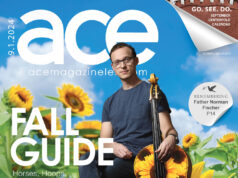By Kakie Urch
Free wireless broadband service will be introduced in those areas of Lexington in time for the Alltech FEI Equestrian Games, Mayor Jim Newberry announced at a news conference in the lobby of the government center this morning. Newberry announced about $1.1 million in state and federal public safety grants and a $550,000 grant from the John S. and James L. Knight Foundation, saying that these funds and a collaboration between a consortium of public, private and educational agencies, including the University of Kentucky and the Blue Grass Community Foundation made the announcement possible.
The city has been working for years on a plan to bring broadband to the downtown, and last year made the first step, bringing a rehabilitated broadband tower online in the downtown area and making it available to law enforcement only by VPN.
But visitors to the downtown have been unable to connect to any free city wifi.
Using newly engineered broadband on city traffic lights and Kentucky Utilities-owned lampposts, the network will allow law enforcement to have better and more integrated response and to share information more easily between patrol car terminals.
The $1.1 million collection of state and federal grants will help with that.
As an added benefit, the traditionally digitally underserved neighborhoods of the East End and Cardinal Valley will get both a free broadband wireless connection and a concentrated effort, through the Blue Grass Community Foundation’s administration of the $550,000 Knight Foundation Grant, to help residents use the connection for educational, informational and vocational uses.
“Knight Foundation believes that access to information is a core community need, as essential as good schools, safe streets and clean air,” said Jorge A. Martinez, Knight Foundation’s director of information systems.
A map of which areas will be served by the free connection is still being developed and will be available online. City officials, in a news release, said that “The new network will add the underserved areas in the East End and Cardinal Valley, the corridors
and the college town area between the University of Kentucky campus and the business district. The college town area also has been a focus of the city’s work to improve South Limestone Street.”
The network will, in essence, be an extension of the University of Kentucky’s signal and users would log on as guests, much as users on the campus
already do.
Kakie Urch is Asst. Professor, New Media School of Journalism and Telecommunications, University of Kentucky







